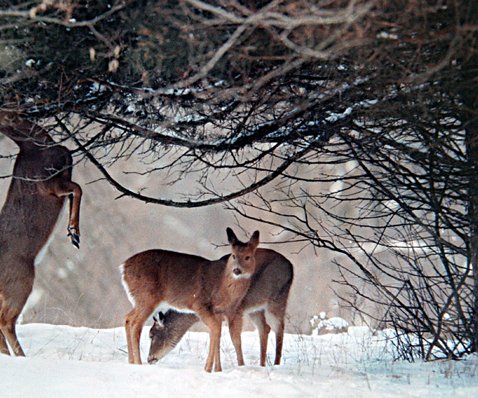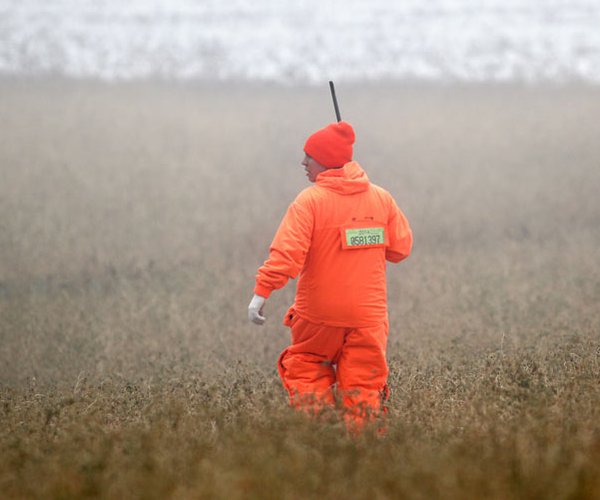Each season has its dominant color from summer greens to flashy yellows as autumn approaches.
Canadian goldenrod, one of the most common of eight upland species of this plant, all members of the sunflower family, begins showing its true colors as summer enters its last full calendar month.
The goldenrod lacks respect from many viewers and gardeners because goldenrods are so common that its showy presence is erroneously blamed for causing hay fever. Two other hardy, but unspectacular plants with camouflaged blooms, are guilty of releasing airborne pollen into August air about the time goldenrods flower. The common and giant ragweed, both having tiny, green blooms, are guilty.
Goldenrod pollen is heavy, sticky, and typical of many insect-pollinated plants, giving the goldenrods an adequate alibi.
Still, gardeners shy away from using this easy-to-grow late summer bloomer to highlight borders and beds.
Canadian goldenrods often have conspicuous galls caused by insects laying their eggs inside stem tissues, which then cause swellings that are sometimes collected by ice fishers wanting to use the tiny insect grub as bait. Don’t wait too late to collect the bait; woodpeckers learn of this fish food, too.
Goldenrods, like many members in the sunflower family, have tiny flowers grouped to make their inflorescences showier.
The fruits of many earlier flowering plants are in fruit stages, with black walnuts, shagbark hickory nuts, wild apples and a few white walnuts (butternuts) maturing boundless numbers of food reserves.
Hank Judd, a hickory nut sage from rural Sauk City, is ready to pick up a banner amount of nuts, but wonders whether or not this might be a bad year for worms in the nuts. Wind has blown a few down a few nuts, which gives us a sample to answer Judd’s question.
Doug Williams, at his D W Sports Center in Portage, has a white oak loaded to the hilt. He’s seen a few of his early signs of autumn; a snake crossing the road. Early fall is what this farmer predicts.
Customers patronizing his sporting store have reported turkey poults the size of partridge, deer trying to cross roads as flies cause anxious spurts of energy, and a few rattlesnakes have been reported in nearby hills.


The gentians, cream and bottle, are coming into bloom, along with the blue and red cardinal flowers. All four are spectacular and late summer favorites of many.
The Wisconsin Department of Natural Resources suggests eligible hunters hoping to participate in the Gun Deer Hunt for Hunters with Disabilities contact and confirm potential sponsors before Sept. 15, 2024. The hunt is Oct. 5-13, 2024.
The WDNR reported that the annual spring survey of breeding waterfowl indicated both stable populations and habitat conditions for migratory birds.
The estimated breeding duck population is down 3.7 percent but still above the long-term average. The mallard population is down 7.9 percent and lower than the long-term average. Canada goose numbers are similar to 2023.
The wet conditions across the state should provide excellent late brood-rearing conditions.
There will not be a sharp-tailed grouse season this autumn, and therefore no permit applications are being offered.
Wild ginseng berries are turning red. Diggers, and observers, are reminded that a digger’s license is required BEFORE plunging a screwdriver into the soil in early September. Most plants should be left to grow a larger root plus there are minimum plant leaf requirements on plants that are large enough to be dug. Seeds must be planted in the area where a plant is dug.
Most, who recognize Wisconsin’s State Herb, observe it and maybe plant the seeds and leave it for another time, maybe never.
Most novice mycologists are forecasting a grand season for edible fall fungi, including puffballs and hen and chicken-of the woods mushrooms. Mushrooms not safe to eat will likely provide a fantastic array of colors adding to glorious small fall viewing.
Interesting hints of autumn are showing their true colors and prickly ash fruits are quite fragrant, as are all parts of beebalm.
Ghost plant is showing a great year for a plant and fungus growing attached to one another and then connected to a host plant’s roots.
Maybe this is forecasting a better morel season during May 2025, because it grows in a similar fashion.
— Jerry Davis is an Argyle native and a freelance writer who lives in Barneveld. He can be reached at sivadjam@mhtc.net or at 608-924-1112.




